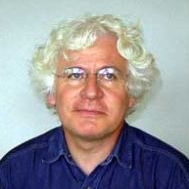Growth, and Structural Characterization of Self-Nucleated Nanowires
A special issue of Crystals (ISSN 2073-4352).
Deadline for manuscript submissions: closed (22 July 2018) | Viewed by 21633
Special Issue Editor
Special Issue Information
Dear Colleagues,
Because of their unique structural and optical properties, semiconductor nanowires (II-VI materials, III-V arsenides, phosphides, antimonides and nitrides) have been a subject of sustained interest for a couple of decades. This is particularly true for III-nitride nanowires (NWs). With respect to bulk and layer material, the absence/drastic reduction of extended structural defects makes them particularly promising for a new generation of light emitting diodes (LEDs) or laser diodes (LDs) emitting in a wavelength range spanning from infrared to ultraviolet.
Commonly, NWs also exhibit specific electrical properties related to their morphology: Higher dopant solubility limit than in layers, assigned to an easy elastic strain relaxation in nanowires have been reported. Fermi level pinning effects related to surface proximity as well as depletion thicknesses extending to their whole volume in the case of thin enough nanowires have also been reported and are governing to a large extent the electrical transport properties of nanowires. Combined to their growth versatility on virtually any kind of substrates (Si, semiconductors, amorphous material, metal, graphene, etc.) these unique morphological, crystallographic, optical and electrical properties make nanowires fascinating for both basic and device-oriented research.
In the well known catalyst-assisted case the growth of nanowires is triggered by the previous deposition of catalyst droplets on the substrate, acting as a reservoir of constituing species and promoting nanowire growth according to the well known VLS regime.
By contrast, the growth of self-nucleated nanowires, namely nanowires grown in absence of any catalyst is still a matter of controversy, especially as far as the very first stages of their nucleation is concerned. Such NWs, free by nature of catalyst contamination, are particularly attractive for device applications covering the fields of LEDs and LDs, biological sensors, single NW transistors and many more. In the particular case of nitrides, the huge piezoelectric constants make NWs of potential interest for strain-sensitive sensors and energy harvesting.
Detrimental to most of these applications the morphology, chemical composition, doping fluctuations inherent to spontaneously nucleated NWs can be overcome by using patterned substrates to grow arrays of identical NWs with a degree of in-plane ordering favorable to device processing. In this case, the nucleation process itself is not affected and still is of “non-catalytic” nature while growth is selectively performed on predefined sites. A further degree of freedom is provided by the patterning characteristics such as pitch and hole diameter, which combined to mask selectivity have been shown to affect growth kinetics.
We invite contributors to submit manuscripts on the growth mechanisms of self-nucleated semiconductor NWs and NW heterostructures, on the characterization of their morphological, microscopical, optical and electrical properties and on the realization of devices.
The potential topics include, but are not limited to:
- Growth of self-nucleated NWs including the modelling of their nucleation and of steady-state growth regime
- Selective area growth of self-nucleated NWs, including patterning-mediated engineering of physical properties
- Nanowire heterostructures
- Characterization of NW physical properties (microscopic, optical, electrical, etc.)
- Applications of self-nucleated NWs to the realization of LEDs, LDs, sensors, piezoelectric devices
- Flexible electronics and optoelectronics applications.
Prof. Dr. Bruno Daudin
Guest Editor
Manuscript Submission Information
Manuscripts should be submitted online at www.mdpi.com by registering and logging in to this website. Once you are registered, click here to go to the submission form. Manuscripts can be submitted until the deadline. All submissions that pass pre-check are peer-reviewed. Accepted papers will be published continuously in the journal (as soon as accepted) and will be listed together on the special issue website. Research articles, review articles as well as short communications are invited. For planned papers, a title and short abstract (about 100 words) can be sent to the Editorial Office for announcement on this website.
Submitted manuscripts should not have been published previously, nor be under consideration for publication elsewhere (except conference proceedings papers). All manuscripts are thoroughly refereed through a single-blind peer-review process. A guide for authors and other relevant information for submission of manuscripts is available on the Instructions for Authors page. Crystals is an international peer-reviewed open access monthly journal published by MDPI.
Please visit the Instructions for Authors page before submitting a manuscript. The Article Processing Charge (APC) for publication in this open access journal is 2600 CHF (Swiss Francs). Submitted papers should be well formatted and use good English. Authors may use MDPI's English editing service prior to publication or during author revisions.
Keywords
- Semiconductor nanowires
- Self nucleation
- Catalyst-free nucleation
- Self-nucleation and growth theory
- In-plane organized nanowire growth
- Selective area growth
- Nanowire physical properties (structural, optical, electrical)
- light emitting diodes
- laser diodes
- Nanowire devices





